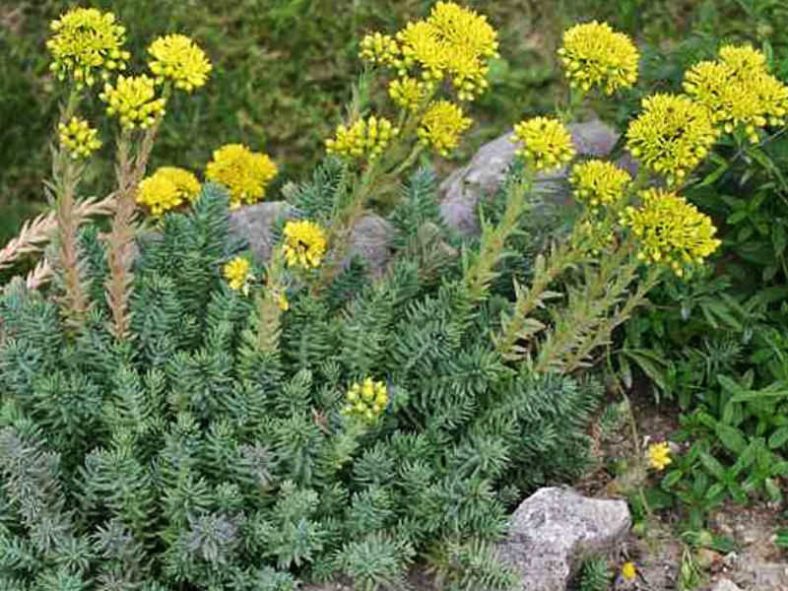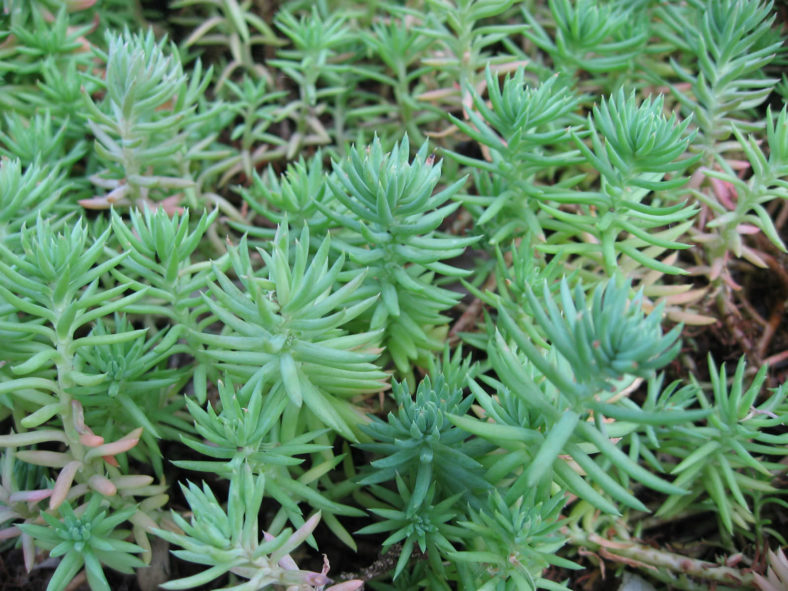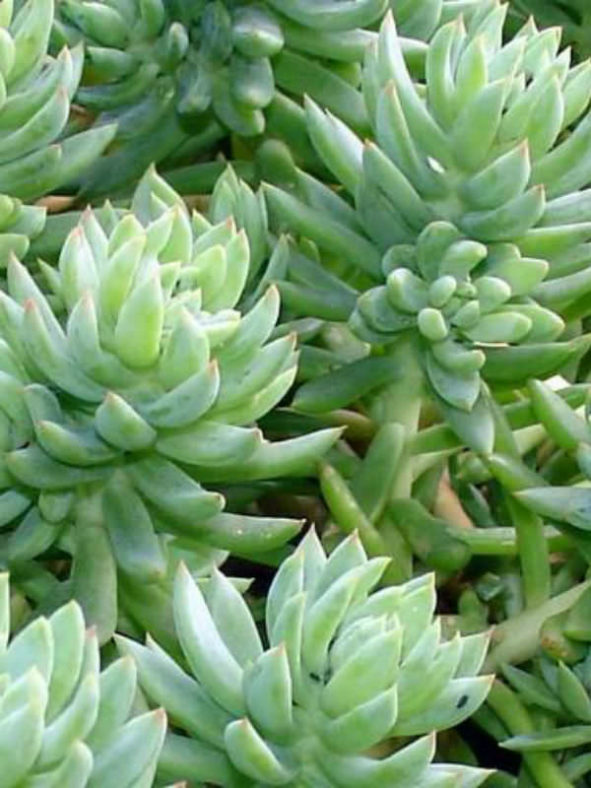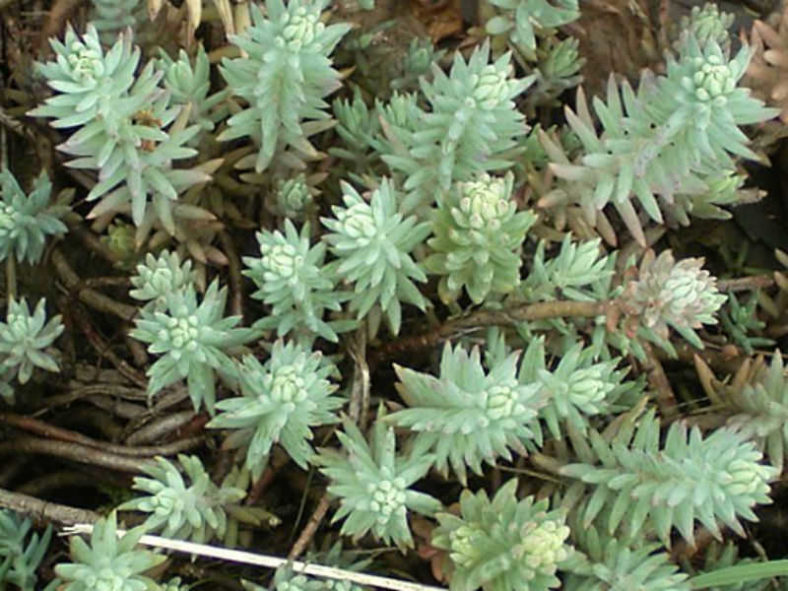Scientific Name
Petrosedum rupestre (L.) P.V.Heath
Common Name(s)
Blue Stonecrop, Jenny's Stonecrop, Prick Madam, Reflexed Stonecrop, Rock Stonecrop
Synonym(s)
Sedum reflexum var. rupestre, Sedum reflexum, Sedum rupestre
Scientific Classification
Family: Crassulaceae
Subfamily: Sedoideae
Tribe: Sedeae
Subtribe: Sedinae
Genus: Petrosedum
Etymology
The specific epithet "rupestre" (pronounced "rue-PES-tree") means "that lives on cliffs or rocks" and refers to the often rocky habitat of this species.
Origin
Petrosedum rupestre is native to mountain areas in central and western Europe.
Description
Petrosedum rupestre, formerly known as Sedum rupestre or Sedum reflexum, is a mat-forming succulent with prostrate, much-branched stems and small, gray-green leaves. It can grow up to 4 inches (10 cm) tall and spread up to 24 inches (60 cm) wide. The leaves are stiff, succulent, and linear, with a pointed tip, measuring up to 0.8 inches (2 cm) in length.
The flowers are yellow, star-shaped, and appear in terminal cymes in summer. They can reach a diameter of up to 0.5 inches (1.3 cm).
Cultivars

Hardiness
USDA hardiness zones 5a to 9b: from -20°F (-28.9°C) to 30°F (-1.1°C).
How to Grow and Care
When growing Sedums, keep in mind that these plants need very little attention or care. They will thrive in conditions where many other plants thrive, but also do just as well in less hospitable areas. They are ideal for that part of your yard that receives too much sun or too little water to support the growth of other plants. A common name for Sedum is Stonecrop because many gardeners joke that only stones need less care and live longer.
Sedum is easily planted. Simply laying the plant on the ground where you want it to grow is usually enough to get the plant started there for shorter varieties. They will send out roots from wherever the stem is touching the ground and the root itself. If you would like to ensure that the plant starts there, you can add a very thin layer of soil over the plant.
You can break off one of the stems for taller varieties and push it into the ground where you would like to grow it. The stem will root very easily, and a new plant will be established in a season or two.
Learn more at How to Grow and Care for Sedum.
Links
- Back to genus Petrosedum
- Succupedia: Browse succulents by Scientific Name, Common Name, Genus, Family, USDA Hardiness Zone, Origin, or cacti by Genus
Photo Gallery
Click on a photo to see a larger version.


